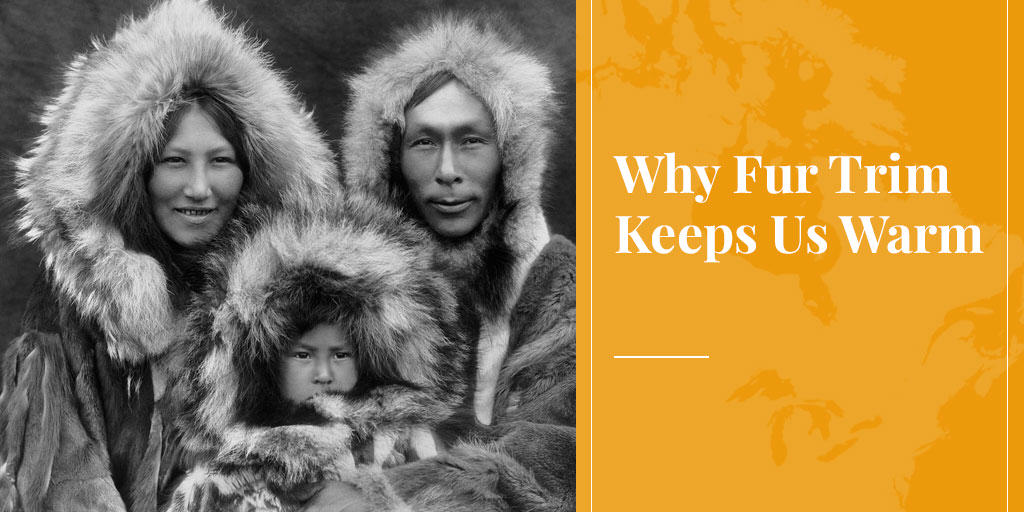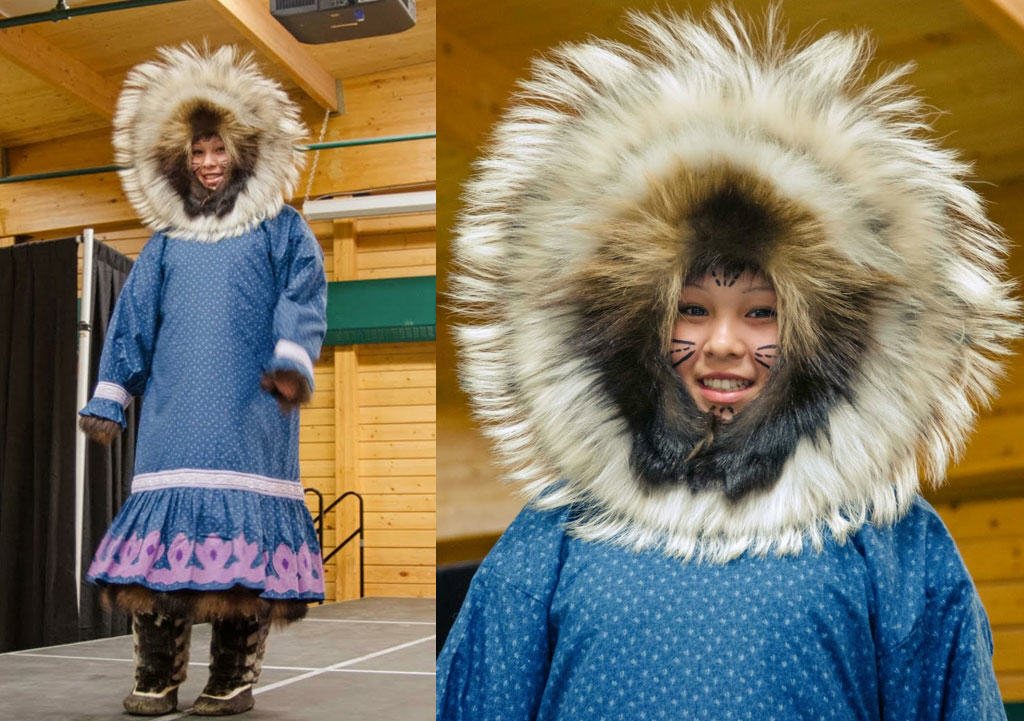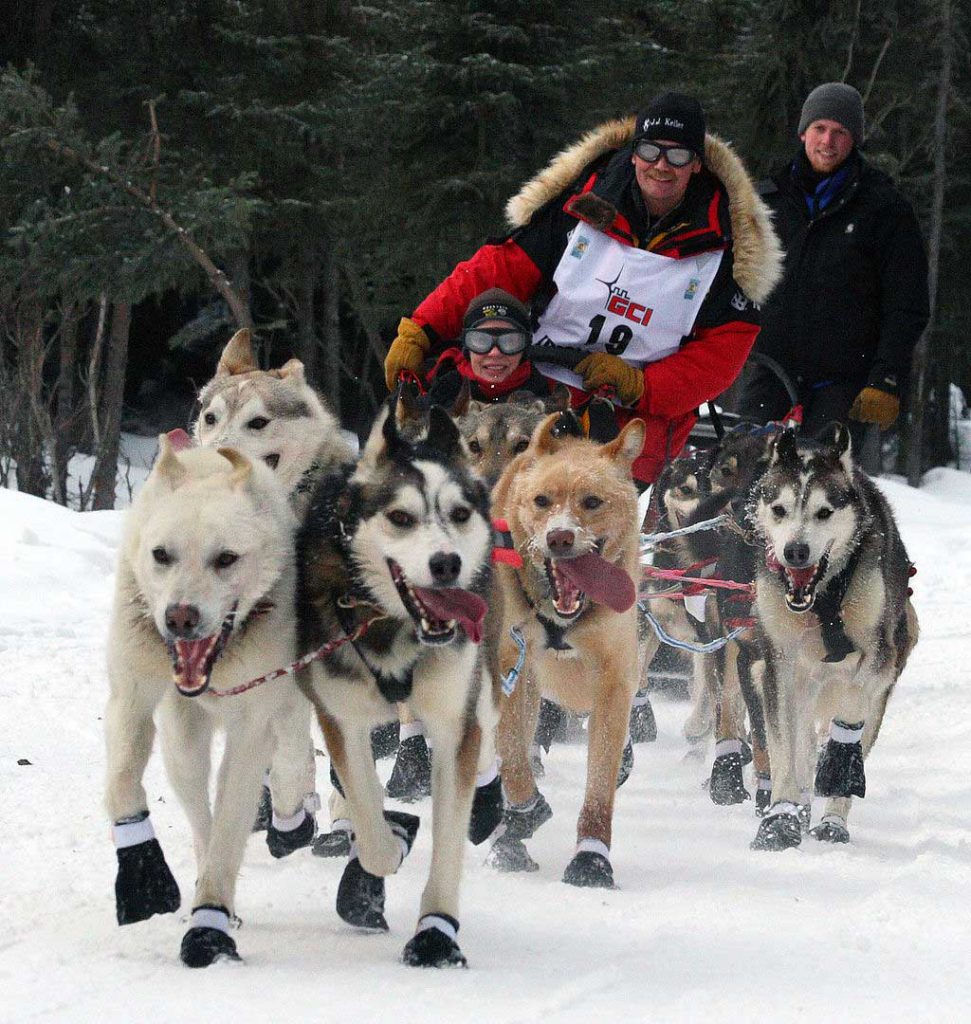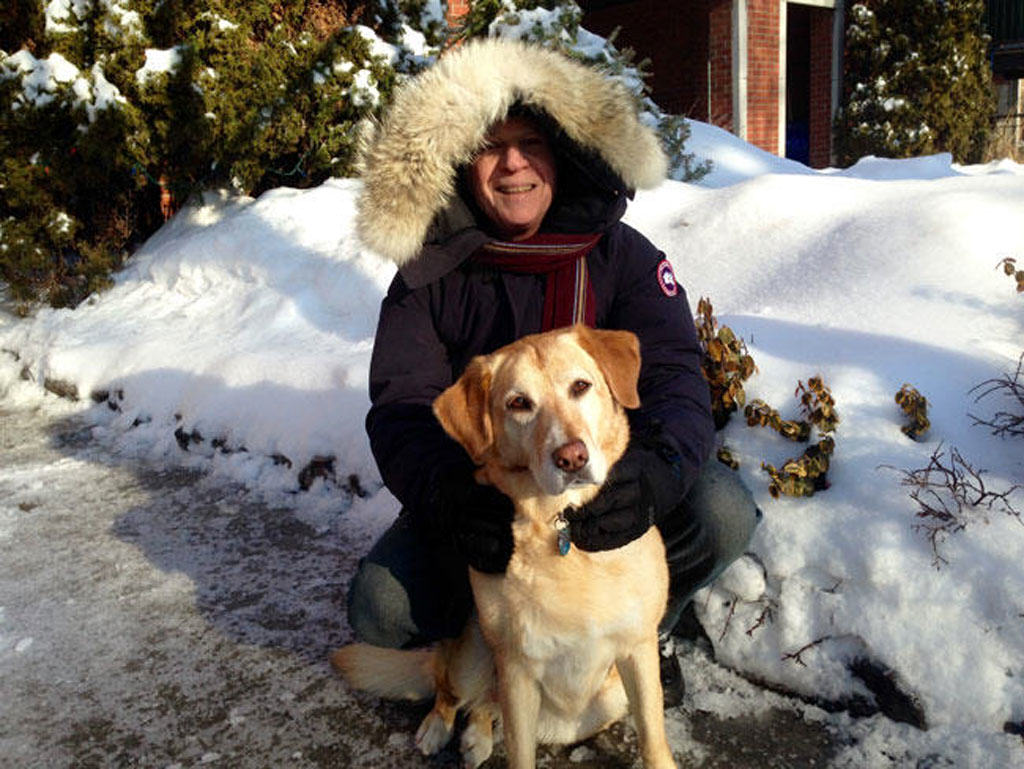
Fur-trimmed and down-filled parkas are everywhere in our cities these days, but is the coyote, fox or other fur trim on the hoods just decorative, as activists claim, or does it really help keep us warm?
We’re not all Inuit hunters, Iditarod dog mushers, or polar explorers, but we’ve all seen them, if only in pictures: men and women braving the elements in voluminous parkas, topped off by huge hoods with giant fur ruffs. Yet their faces are so exposed, and most of the fur trim doesn’t even contact the skin, so can they really be that warm? Or are they just for show? Have faith: fashion statements are the last thing on anyone’s mind when the mercury plummets and the wind picks up. Developed over millennia by the indigenous peoples of the Arctic, these ruffs work.
For most southerners, a parka hood is just about protecting the head from a bit of wind and rain. But people who work at –30°C, often for long periods, need much more. That doesn’t mean bundling up like Himalayan mountaineers though, because beyond keeping warm, they also need to function effectively. Whether it’s trapping, fishing, or driving a snowmobile, they want clear vision both in front and to the sides. Giant fur ruffs fit the bill perfectly.
Here are the key design features, and why they work so well:
Show Some Cheek
There are two ways your body loses heat in cold weather: conduction and convection. Conduction is not a major concern for southerners, unless we get soaked to the skin, and then our body will cool down really fast, especially if there’s a wind to add convection. And so we blithely pull our hoods close around our faces, and there may even be a draw string for just this purpose.
Now try ice fishing in Nunavut – or almost anywhere in Canada, for that matter – in January, and see what happens! Your hood’s fur trim is tight up against your cheeks, right next to your mouth. Each time you exhale, the moisture in your breath forms ice on the fur. And since ice is a far better conductor of heat than air, your fur trim, far from keeping you warm, becomes a very efficient conductor of heat away from your face. Next thing you know, you’ve got frostbite.
Real polar ruffs greatly reduce this ice formation. The fur trim is still tight up against the face, but contact is made behind the cheekbones. Hence the exposed face we talked about.
SEE ALSO: Amazing facts about fur: Dressing for the Arctic
Think Big
You also want your hood’s fur ruff to be large. Your traditional caribou or seal skin parka is already bulky, so top it off with the lion-meets-angry-frilled-necked-lizard look! The most spectacular of all ruffs, a “sunburst” ruff, can measure three times the diameter of the wearer’s head!

Wind removes heat from your face by convection, and the faster it blows, the more heat it removes. But when the wind hits a solid object, a boundary layer is created in front of the object, inside which the wind slows down. The larger the object, the thicker and more insulating the boundary layer. Ergo, the greater the diameter of your fur ruff, the warmer you’ll be.
This has long been intuitive to Inuit designers, and in fact to all of us. It’s the reason why, when we face into a gale with a wall at our backs, the wind speed is much less than if we’re standing in the open. The wall has created a boundary layer.
In 2004, a research team from the universities of Michigan, Washington and Manitoba quantified this boundary layer effect using a heated model of a human head, thermocouples, a wind tunnel, and a variety of hoods. As expected, the most effective hood by far in slowing heat loss had a sunburst ruff. It was particularly superior to other hoods when the wind was at a high yaw angle to the model’s face, i.e., blowing from the side.
(For an excellent graphic showing how a fur ruff creates a boundary layer, see “Why fur-lined hoods are so warm,” Chicago Tribune.)
Varying Hair Lengths
The Inuit have also long understood that fur trim works best when the hairs are of varying lengths. This is naturally the case when traditional furs such as arctic fox, wolf, or wolverine are used, since they have long guard hairs and short underfur, and different parts of the pelt are different lengths. Coyote and fox also have these qualities and are more commonly available on modern parkas. The effect can be enhanced further by using two types of fur within one ruff.
The same 2004 research team sought to quantify this also, comparing the sunburst ruff with a “military hood” with short-haired fur of uniform length. Once again the sunburst ruff came out top, with the researchers concluding that a variety of hair lengths disrupts the wind flow more and thereby helps build an effective boundary layer.
One comparison not made by the researchers was between real fur trim and fake fur, but since fake fur hairs are uniform in length, the conclusion is unavoidable that fake fur trim can’t compete with the real deal.
That aside, their conclusion was unequivocal: “The present experiments clearly demonstrate the superiority of the sunburst fur ruff configuration for all wind velocities and yaw angles tested. … The sunburst fur ruff design is truly a remarkable ‘time-tested’ design.”

Southerners Take Heart
The good news for everyone living south of the Arctic Circle is that we can all benefit from this “time-tested” design – perhaps just scaling it down a bit. Caribou or seal skin parkas are overkill for most of us, not to mention the stares they’d attract. But we can easily fit ourselves out with a down-filled hood with real fur trim that’s plenty big enough.
The most popular fur for ruffs these days is coyote, which not only keeps us warm, but also dovetails with the need to manage a growing coyote population across North America. Fox can also be effective.
SEE ALSO: Abundant furbearers: An environmental success story
Truth About Fur’s Alan Herscovici lives in Montreal, currently blanketed in snow, where temperatures in January average about -10°C, but have risen no higher than -20°C for much of this winter. With wind chill, it can feel like -30°C.
“Call us ‘southerners’ if you want, but there are days I feel like Nanook of the North,” says Alan. “The coyote ruff on my parka has proven its worth this winter!”

***
To learn more about donating to Truth About Fur, click here.












Hi, fur brims are common throughout the Arctic and people of the north. However, do you have any information why mountaineers don’t/rarely wear fur brims on the hoods of their jackets (i.e. not seen on those who summit Mt Everest)? The main reason for fur is to protect the face against the wind, and at those high altitudes wind is a big issue as well. Is it due to heritage, type of wildlife in those regions, manufacturers just don’t use it for their garments, or…?
Am I wrong in my observation?
Thanks
That’s an interesting observation, Dusty, and we’ll look into it. Hopefully we can report back soon.
Hi,
I added both fox and coyote fur to all my hooded winter coats and it really does make a
big difference! I live in the high mountain region of Colorado, so am grateful that I have this. Now I would like to locate somewhere to
buy an inuit-style pullover anorak? Do you have any idea where I should look?
Thank you,
Connie Qualey
Hi Connie, can you send a photo of the kind of anorak you’re looking for to [email protected] ? Maybe we can help.
When a fur pelt tears when handled or sewn, the pelt is dried out and beginning to fall apart. Unfortunately, it is too late to save the pelt at this point; time to consign it to the compost.
I would love to know more about restoring “craft cutter” pelts. I have bought a few old furs that just fall apart when I try to sew them. Can anything be done to help restore the pelts?